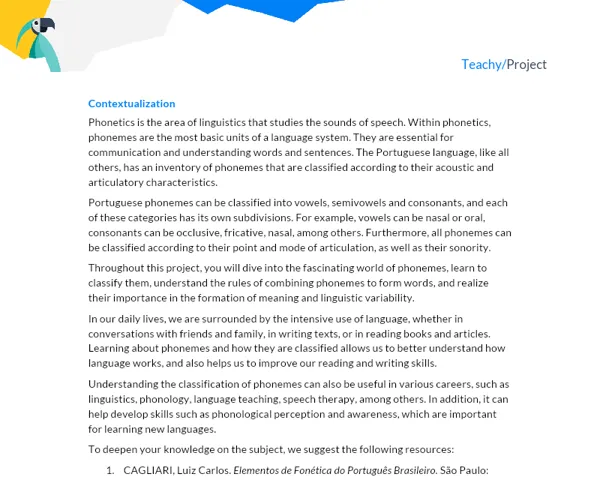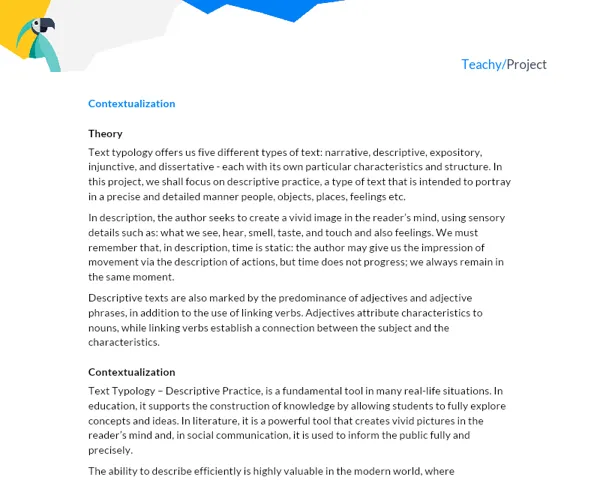Contextualization
Introduction
Hello, kids! Let's embark on an adventure through the wonderful world of the Portuguese language. Along our journey, we will explore two very important concepts: prefix and suffix. But what are they, after all? Well, we all know that words are formed by small parts, like puzzle pieces, right? The prefix and the suffix are precisely these pieces that, when put together, form the words we use every day.
The prefixes and suffixes
Let's start from the back, with the suffix. It is a small part that we add at the end of a word to form a new word or to change the meaning of the original word. An example of this is the word 'alegria' (joy). If we add the suffix 'oso', the word becomes 'alegrioso', which means 'very joyful'. Did you notice the change the suffix brought?
Now, let's go to the front, with the prefix. It is a small part that we add at the beginning of a word to form a new word or to change the meaning of the original word. An example of this is the word 'feliz' (happy). If we add the prefix 'in', the word becomes 'infeliz', which means 'unhappy'. Can you perceive the difference the prefix brought?
Prefixes and suffixes are like tools that help us better understand the meaning of words. They are widely used in our language, so it is very important to understand how they work. Are you ready to embark on this adventure with me?
Practical Activity
Activity Title: 'In Search of Lost Prefixes and Suffixes'
Project Objective
The objective of this project is to explore, in a fun and practical way, the concept of prefixes and suffixes, enhancing linguistic knowledge, creativity, teamwork, and problem-solving skills.
Detailed Project Description
In this activity, student groups will be challenged to create a board game that simulates an adventure, in which players need to collect cards containing prefixes and suffixes to form words. The game should involve research and understanding of the concepts studied, as well as stimulate communication and cooperation among team members.
Necessary Materials
- Cardboard or poster board to make the board
- Colored pens, colored pencils, or crayons
- Dice
- Blank cards
- Textbooks or dictionaries
- Blunt scissors
- Glue
- Magazines (to cut out pictures that can illustrate the game)
Step by Step
1. Dividing Tasks
Each group should organize itself to divide tasks equitably. Some roles that can be assigned are: group leader, who will coordinate the work and help solve problems; writer, who will write down ideas and create the game rules; artist, who will create the board and game cards; and researcher, who will look up examples of prefixes and suffixes in the dictionary or textbook.
2. Creating the Board
Using cardboard or poster board, students should draw the game board. It should be divided into squares, and each square should contain a word. Some words may have a prefix or a suffix, and players should be able to identify them.
3. Making the Cards
Blank cards should be used to create the game cards. On each card, students should write a word with a prefix or a suffix. Besides the text, they can draw an illustration to represent the word.
4. Setting the Rules
The class should gather to discuss and decide on the game rules. Remember that the goal is for players to identify the prefixes and suffixes in the words, so the central rule should be about that.
5. Playing and Learning
Now, it's time to play! The groups should test the game among themselves. During the game, students will have the opportunity to enhance their knowledge of prefixes and suffixes, as well as exercise skills such as problem-solving, communication, time management, and creative thinking.
At the end of the project, each group should present the game created to the class, explaining the rules and how the prefix and suffix cards contribute to the development of the game.
Remember, the most important thing is to have fun while learning! Good luck, kids!



